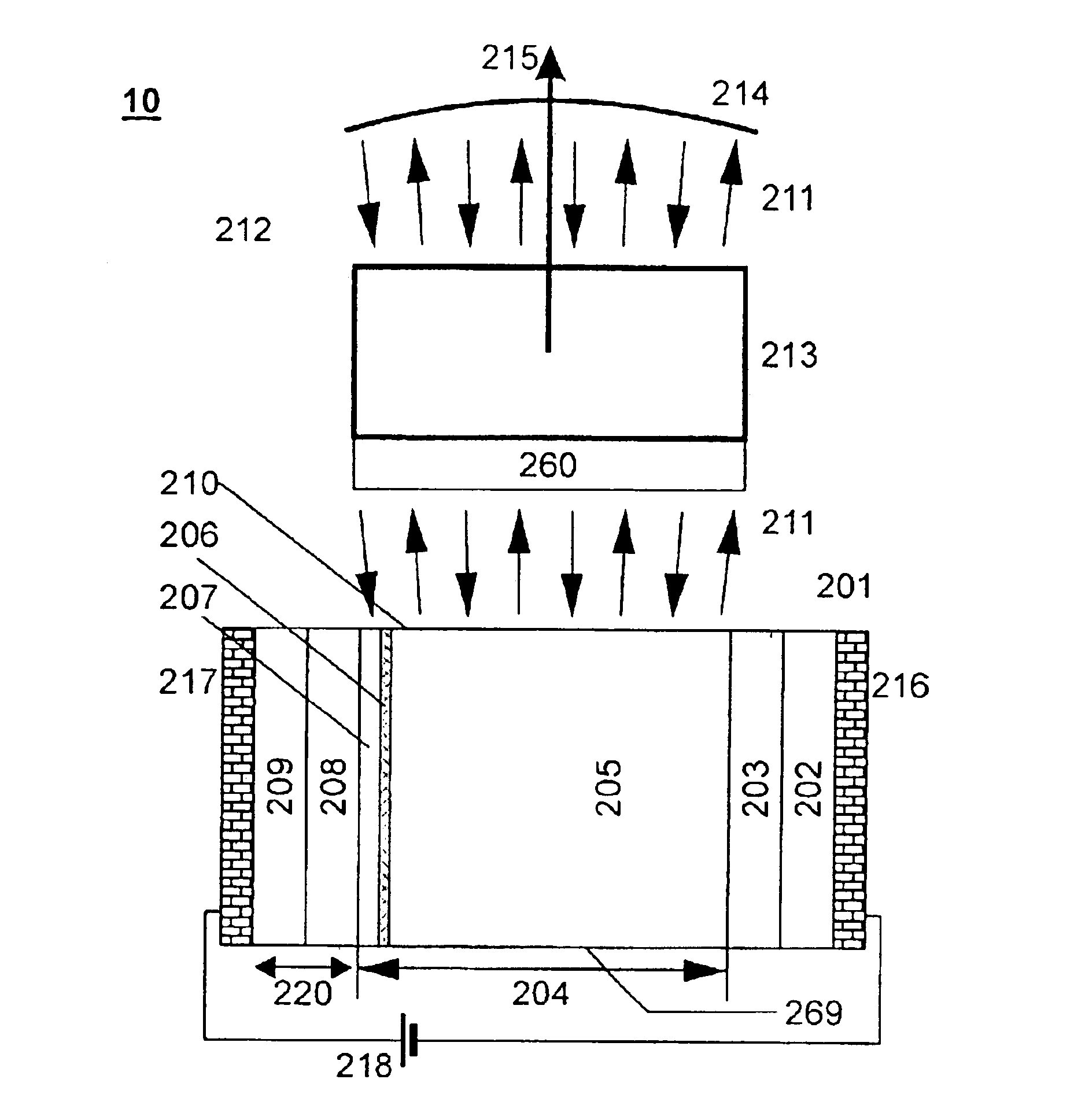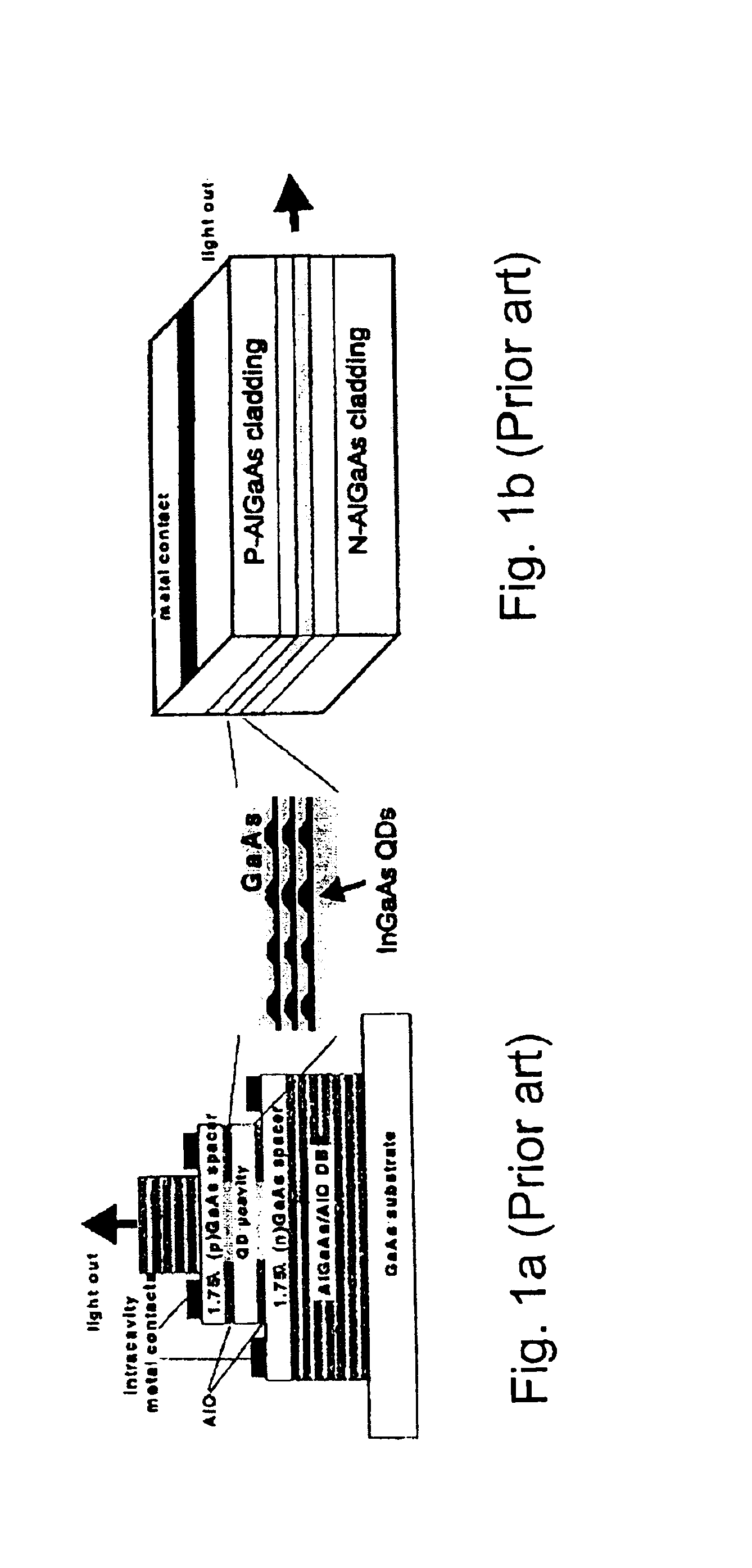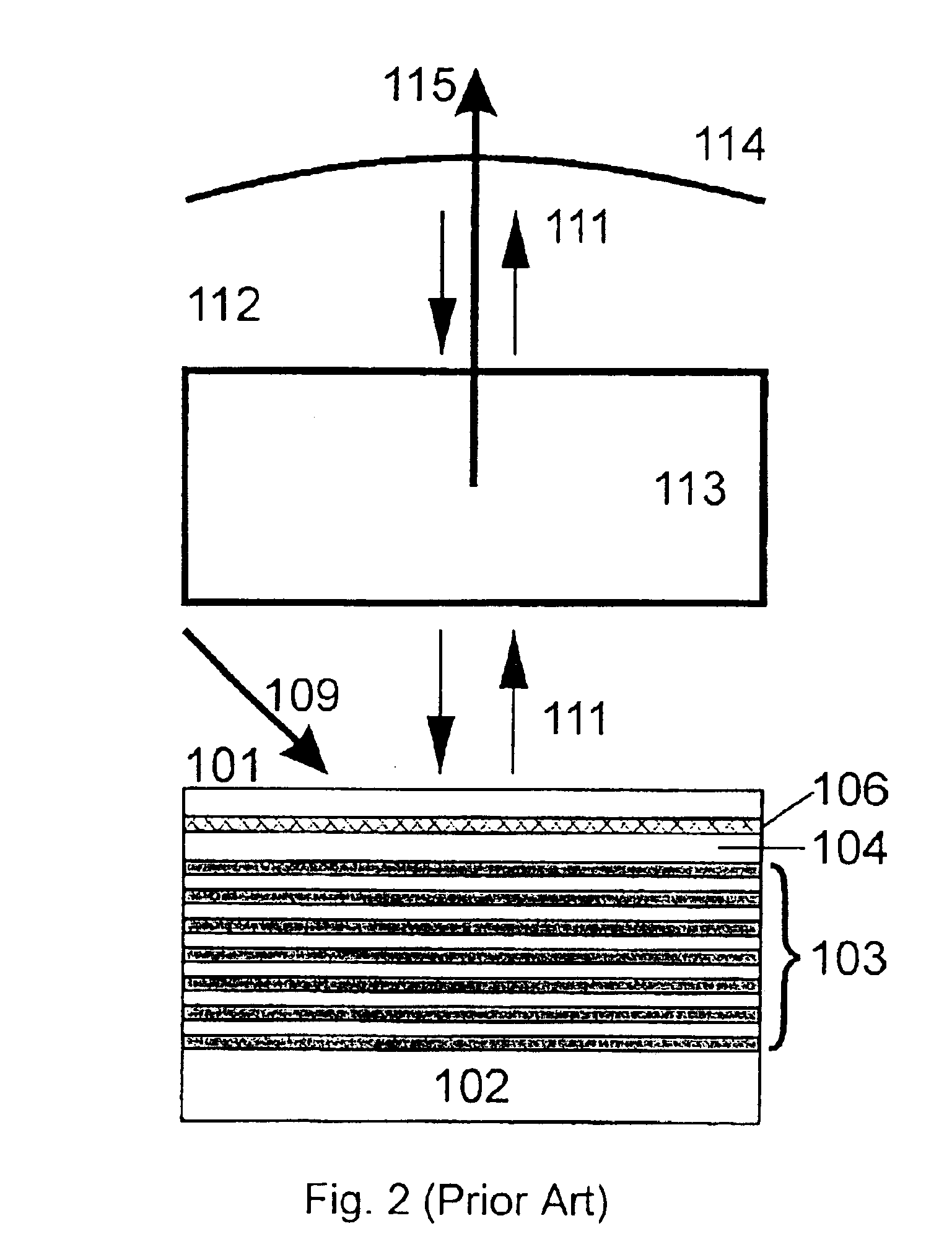Apparatus for and method of frequency conversion
a technology of apparatus and frequency, applied in the field of online optics, can solve the problems of not being able to laser, requiring too large current densities, and not being suitable for continuous wave operation
- Summary
- Abstract
- Description
- Claims
- Application Information
AI Technical Summary
Benefits of technology
Problems solved by technology
Method used
Image
Examples
Embodiment Construction
[0096]The present invention is of an apparatus for and method of frequency conversion which can be used for converting a laser frequency. Specifically, the present invention can be used for providing a laser light having a frequency in a wide spectral range. More specifically, the present invention can be used in, e.g., optical storage applications, where short wavelength is needed to increase the density of the stored information by reducing the characteristic feature size, or in projection displays, where green and blue lasers are needed for full-color applications. The present invention is further of a method of manufacturing the apparatus.
[0097]For purposes of better understanding the present invention, as illustrated in FIGS. 3-8 of the drawings, reference is first made to the construction and operation of a conventional (i.e., prior art) frequency conversion apparatus as illustrated in FIG. 2.
[0098]FIG. 2 illustrates a prior art frequency conversion apparatus, which is based o...
PUM
 Login to View More
Login to View More Abstract
Description
Claims
Application Information
 Login to View More
Login to View More - R&D
- Intellectual Property
- Life Sciences
- Materials
- Tech Scout
- Unparalleled Data Quality
- Higher Quality Content
- 60% Fewer Hallucinations
Browse by: Latest US Patents, China's latest patents, Technical Efficacy Thesaurus, Application Domain, Technology Topic, Popular Technical Reports.
© 2025 PatSnap. All rights reserved.Legal|Privacy policy|Modern Slavery Act Transparency Statement|Sitemap|About US| Contact US: help@patsnap.com



